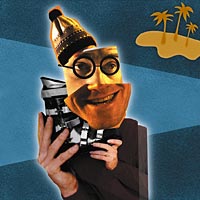Ask Josh - October 1999

Dear Josh,
How would one go about getting a sponsor?
Paul Prins
via the Internet
Ah, sponsorship, that Holy Grail of the awesome-in-his-own-mind skier. Sponsorship is based on a very simple premise: If you are one of the best skiers in the country and perhaps the world, people will notice what equipment you are using or clothes you are wearing and want to buy that equipment or clothing in order to be like you. To get a sponsor, you must prove that you are that skier. But getting a sponsor won’t do much for you; you’ll need many sponsors to come close to having your ski life meaningfully subsidized. And you should know that hardly anyone makes a living entirely off sponsorship.
Still interested? Think about what you have to offer potential sponsors. Are you not only one of the best skiers in the country but a photogenic one as well? The best way to get a sponsor in the ski industry is to have pictures of you skiing indescribably well published in various ski magazines. Frequently. That means not only being a better skier than most people can even imagine, but also being buddies with photographers. And it means doing just what the photographers say. Over and over. For no money. Have fun.
Last year, the moguls were shorter and farther apart than ever before. Are shaped skis to blame?
Bob St. Pierre
Burlington, Vermont
Unfortunately, what you noticed last year was not the result of big, carvy-turning behavior on the part of super-sidecut skis. It was just a crappy snow year. The formation of a mogul is a fascinating and quite complex phenomenon, but it relies on more than just the shapes of passing skis or the shapes of the turns those skis make. Snow depth, in particular, is an important factor. Moguls are merely snowy accretions, and the less snow there is to accrete, the smaller the moguls will be. Usually moguls that are far apart form on trails that are not very steep. During good snow years they are (without grooming) not only far apart, but quite huge.
When snow is lacking, the opposite is true. For mogul shrinkage to be caused by something other than scarce snow, we would need to see that it is both widespread and independent of regional snowfall differentials. But reports from mogulistas across the country do not confirm a national mogul diminution and diaspora for last year. This suggests that the phenomenon you note is regional (like the weather), and not the result of changes in equipment design. If the moguls continue to look too short to you this season, you may want to measure yourself to see if you’ve grown.
In recent years, biomechanical alignment (boot grinding, cants under the binding, etc.) has been widely promoted. But why isn’t there a cantable binding or adjustable after-market plate that will accomplish this?
Don Lemos
via the Internet
Oh my God, Don! I, like, can’t believe you asked this, because I have had, like, totally the same question for, like, forever. But guess what? I’m a dweeb. What that makes you I can’t say, but the fact is, only a relatively small percentage of skiers are so into their gear and musculoskeletal structure that they’ll actually try to change one relative to the other. Engineering a binding that would be adjustable as you suggest is entirely possible, but it would cost each binding company millions of dollars to accomplish (drafting, modeling, fabricating, testing, retooling, testing, etc.) and would be bought by perhaps thousands of people.
On top of that, the science behind biomechanical alignment is not standardized. Different people advocate different methods, and few shops do it at all, let alone the same way. And on top of that, once you’ve canted your bindings, you’ve got a left ski and a right ski. What happens when you put your skis on the wrong feet? You lose control, bust your butt, and sue the binding company for leaving you with a crooked posterior. No, I think thatt for now at least, canting will remain a boutique service for we few with too much time and too little of substance to fill it.